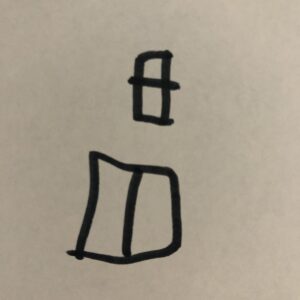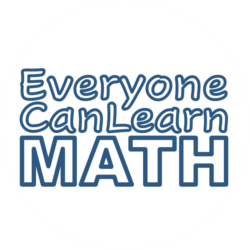A few nights ago, we were having dinner and my daughter said, “You know what’s weird? We learn about shapes in JK/SK [Junior and Senior Kindergarten], and then we learn about them again in grade one, and now I’m still learning about them in grade two!” I told her that she’s right and she will likely continue learning about them all the way through high school but in different ways.
Shapes are so complex and carry so many interesting properties that they transcend all the grades and keep offering more to discover as children grow older.
In the primary grades, we learn about the number of sides and vertices on shapes and how to classify them by name. My five-year-old recently started exploring shapes more deeply. At bedtime this week, he randomly told me, “You know that you can cut a triangle into two smaller triangles if you cut one way and you can cut a triangle into a triangle and a trapezoid if you cut the other way.” I asked him to show me with some drawings and this is what he drew:


Interestingly enough, he is on his way to discovering properties of triangles that I teach in our grade nine mathematics curriculum. And although I won’t yet delve into what the median of a triangle does to its area or what fascinating things happen when you connect the midpoints of two sides of a triangle with a line segment, this proves that they are naturally curious about shapes and they can explore their properties even at a young age.
Later, he showed me how he can turn a rectangle into two squares and turn a square into two rectangles. I encourage this kind of exploration because I want him to stay curious about math and I want him to discover things on his own.

We might think that shapes don’t play an important role in mathematics, but geometry is definitely a vital strand of math. It also lends itself to cross-curricular learning with its connection to art, design, architecture, and much more.
While we may not be ready to discuss the different centres of triangles just yet, I will continue to encourage my children to see the shapes in everything around them and to investigate the properties of shapes. I hope this curiosity lasts through to high school and beyond and trust that the benefits will be countless.



How do you encourage your kids to explore shapes?
Keep spreading the math love <3
![]()
